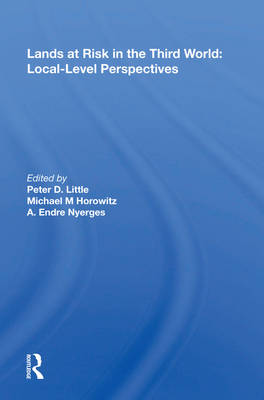
- Afhalen na 1 uur in een winkel met voorraad
- Gratis thuislevering in België vanaf € 30
- Ruim aanbod met 7 miljoen producten
- Afhalen na 1 uur in een winkel met voorraad
- Gratis thuislevering in België vanaf € 30
- Ruim aanbod met 7 miljoen producten
Zoeken
€ 195,95
+ 391 punten
Uitvoering
Omschrijving
This book presents important case studies highlighting social, economic, political, and biological dimensions of environmental degradation in the Third World. Focusing on areas identified as experiencing or at risk for deterioration, the studies are drawn from nearly every continent and cover most of the larger ecosystems of the Third World, including arid and semiarid rangelands, tropical rain forests, steep-sloped mountains and hills, tropical river basins, and coastal lowlands. The authors use local data to examine, test, and refine larger explanatory models and theories, showing how comparisons of case-specific data can sharpen our knowledge about resource use in areas at risk. In doing so, the authors address two critical questions: How can land degradation processes be identified and how can the human role in land degradation be separated from the effects of climate and other natural actions?
Specificaties
Betrokkenen
- Auteur(s):
- Uitgeverij:
Inhoud
- Aantal bladzijden:
- 430
- Taal:
- Engels
Eigenschappen
- Productcode (EAN):
- 9780367012205
- Verschijningsdatum:
- 7/06/2019
- Uitvoering:
- Hardcover
- Formaat:
- Genaaid
- Afmetingen:
- 152 mm x 229 mm
- Gewicht:
- 952 g

Alleen bij Standaard Boekhandel
+ 391 punten op je klantenkaart van Standaard Boekhandel
Beoordelingen
We publiceren alleen reviews die voldoen aan de voorwaarden voor reviews. Bekijk onze voorwaarden voor reviews.











